
(Welcome to DTV Descent, a series that explores the weird and wild world of direct-to-video sequels to theatrically released movies. This week, we go bank robbing with Nazis in a sequel to the biggest Spike Lee joint of them all.)
Spike Lee’s film career is filled with highs and lows, films that won critical acclaim and awards and others that have been forgotten, but he’s never been a filmmaker prone to breaking the box-office. The sole exception, and his only film to gross over $100 million, is 2006’s Inside Man. Lee’s direction, alongside a stellar cast, a tight script, and a respectable budget, resulted in a film that succeeded with critics (certified fresh!) and audiences ($184m worldwide!) alike.
It’s a Universal Pictures release too which means that now, thirteen years later, the studio’s home video division has spun off a direct to video sequel. It’s not their first – and will be far from their last as follow-ups to both Sudden Death (1995) and Bulletproof (1996) are currently in post-production – but it is their most surprising. Look, it’s possible that having to endure movies like Backdraft II (2019) and Benchwarmers II: Breaking Balls (2019) has just broken me, but Inside Man: Most Wanted is actually… okay?
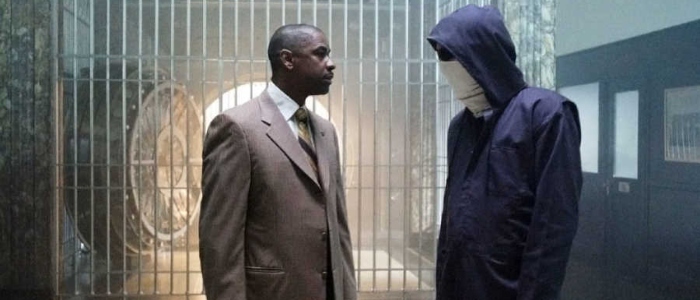
The Beginning – Inside Man (2006)
A man speaks to the camera from what looks like a prison cell, but the cramped space can’t quell his confidence or ego when it comes to revealing that he’s committed the perfect bank robbery. The film then jumps back in time to the robbery itself, and we watch as an armed group take over a bank, dress the hostages in overalls matching their own, and go to work down in the vaults. Outside the streets of New York City are filled with movement as police, press, and passing pedestrians settle in for the show. Detective Frazier takes the lead, but he’s stymied by the robbers’ odd behaviors, a mysterious woman given access to the scene by the mayor, and Frazier’s own predicament involving accusations of theft and embezzlement. As the hours tick by, the situation grows deadlier and murkier as the real motive for the robbery slowly comes to light.
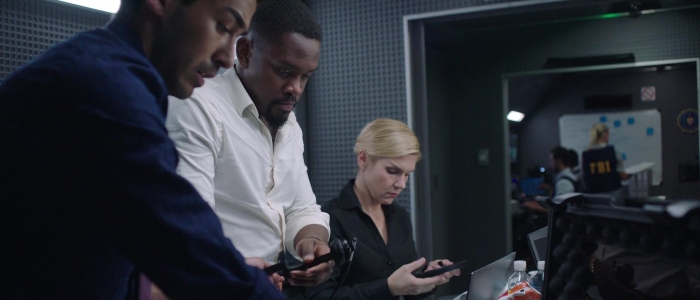
The DTV Plot – Inside Man: Most Wanted (2019)
The US Federal Reserve in New York City is a working bank that draws as many tourists as it does customers, but they all find themselves trapped when an armed group takes over the building and takes them hostage. Negotiators from both the NYPD and the FBI arrive on the scene, but after plenty of diligent investigation on their computers and phones it quickly becomes clear that these aren’t average bank robbers they’re facing. They’re not there for the gold as evidenced by their lack of interest towards the mountains of gold bars at their feet once they’ve entered the vault. No, they’re after something far different – they’re there for Nazi gold. Det. Darbonne and Agent Stewart both see similarities to 2006’s infamous “Nazi diamond heist,” but that only raises more questions than answers. The lead thief identifies herself – that’s right, she’s a lady thief! – as Most Wanted, and her motivations seem connected to players from 2006. But to what end? As the minutes tick by, the confrontation grows murkier and deadlier as the true reason for the robbery slowly comes to light.
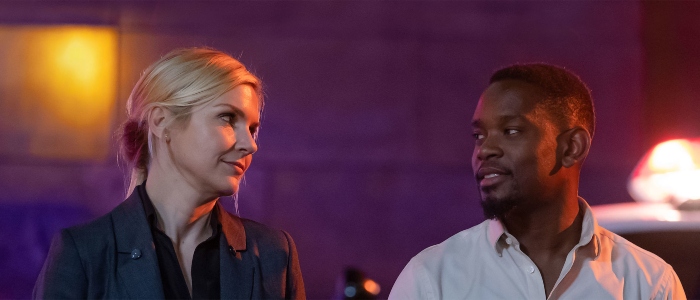
Talent Shift
As mentioned, Spike Lee directed 2006’s original to great success working from Russell Gewirtz’s first produced screenplay. Gewirtz would chase it with the abysmal Righteous Kill (2008), so it’s possible this was a fluke. Producer Brian Grazer helped guide it, and with cinematographer Matthew Libatique (Requiem for a Dream, 2000) and composer Terence Blanchard (25th Hour, 2002) aboard too, the film was a class act from top to bottom. The cast is equally stacked with talent starting with Denzel Washington as the dogged detective, Clive Owen as the master thief, and Jodie Foster as the city’s most powerful broker. Add in Christopher Plummer, Willem Dafoe, Chiwetel Ejiofor, and James Ransone, and you really have no reason to complain. Seriously, this is a dream cast and crew.
These DTV sequels don’t have the resources to ever compare to their theatrical predecessors, but Most Wanted did land a known directorial quantity in Michael J. Bassett (Solomon Kane, 2009). He’s going by M.J. now for some reason, but he’s still got some solid directing chops. That’s where the recognizable names end, though, as writer Brian Brightly is an unfamiliar entity despite (or maybe because of) his three previously produced screenplays, and the rest of the crew is equally unknown. The cast is in a similar boat with Aml Ameen and Rhea Seehorn tackling the cops while Roxanne McKee breathes life into the head thief. They’re competent enough, but only McKee rises above the material to show real personality.
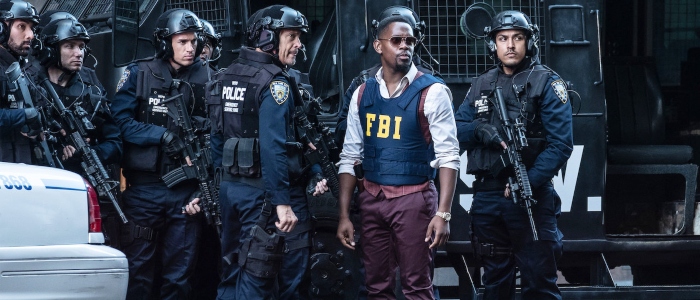
How the Sequel Respects the Original
There’s no right answer when it comes to how these DTV sequels should acknowledge the original films, or if they even should, but Most Wanted lands on the side of being a direct sequel in some big ways. None of the original cast returns, of course, but the events here are dictated by what happened previously. Arthur Case, the old surprise Nazi sympathizer played by Plummer in the first film, has died, and it turns out his son Dietrich is after some long-simmering revenge. It seems Case was convicted of war crimes and saw his name deservedly run through the mud, and Dietrich is holding Dalton Russell (Owen) responsible.
Russell’s current whereabouts are unknown to the police, but his past actions have directly influenced the present in some intricate ways. More on that below, but the idea itself is appreciated as it helps create the realization that this is an actual sequel as opposed to one in name only. There’s no plot here without Russell’s earlier theft and public outing of old man Case, and for better or worse, that’s a good thing.
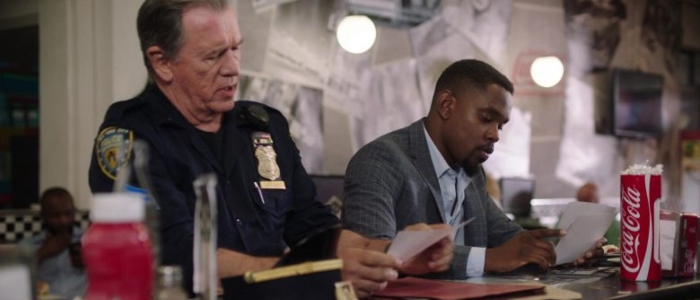
How the Sequel Shits on the Original
As entertaining and engaging as some of that is, though, this sequel makes some unfortunate choices along the way in its effort to connect all of its dots. For one thing – spoiler – Russell is technically in this movie. He spends the entirety of his on-screen time with his head in a burlap sack, though, and not for nothing, but the young, buff arms poking out from the wife-beater t-shirt definitely don’t belong to 55 year-old Owen. Worse, the film ultimately betrays his brilliance by giving credit for that earlier robbery to somebody else. I’ll let you discover the details of the who and the why on your own, but suffice to say it’s a let down after the ingenious nature of the original film’s heist.
That trend continues in the realization that this follow-up isn’t ingenious at all. It’s barely even clever as it fails to offer up a worthwhile puzzle for viewers to be hooked by on their way towards the ending reveals. There are revelations and flashback reveals here to be sure, but none of them leave you impressed or in awe which is always a big draw for heist movies. The film borrows several elements including the overalls, the hidden hideout, the false heist, and even safety deposit box #392, and it leaves too little room for original thrills. What we do get is okay enough, especially for fans of characters sitting around, but the film would have benefited greatly from building its own mystery to go along with its narrative connections.

Conclusion
Inside Man: Most Wanted is an okay little thriller that succeeds well enough despite being a pale follow up to Lee’s original gem. It’s a low-budget ride, but the characters, direction, and story do their job in delivering passable entertainment. That might sound highly critical, but if you’ve seen any of these other 1440 Entertainment releases or read previous entries in this column then you know how rare even this minor feat is – DTV sequels are bad far more often than not, and Most Wanted is… not bad. I’ll take it.
Dig deeper with more DTV Descent!
The post Is ‘Inside Man: Most Wanted’ a Worthy Successor to Spike Lee’s Most Successful Film? appeared first on /Film.
from /Film https://ift.tt/2QrKcWT
via IFTTT
Comments
Post a Comment